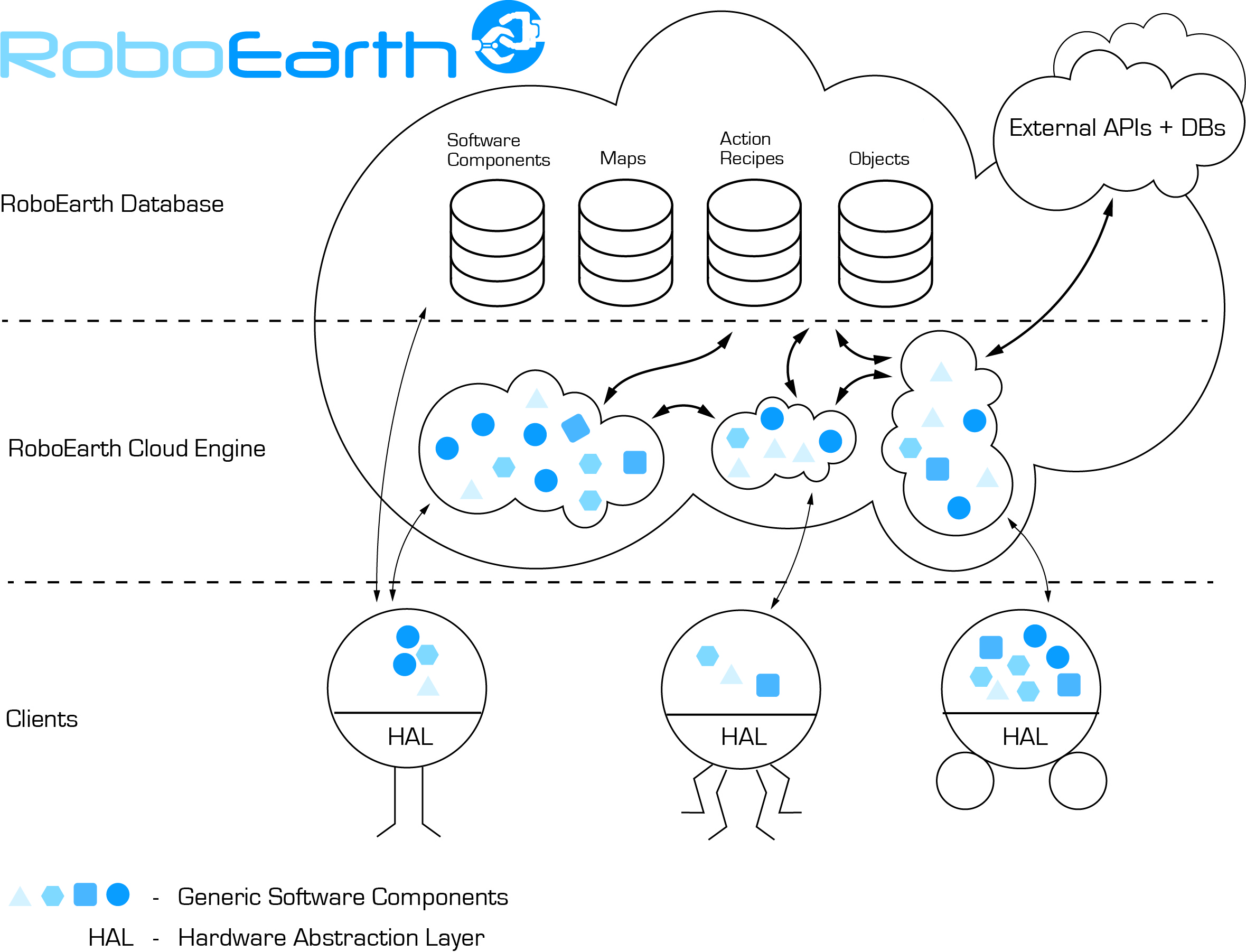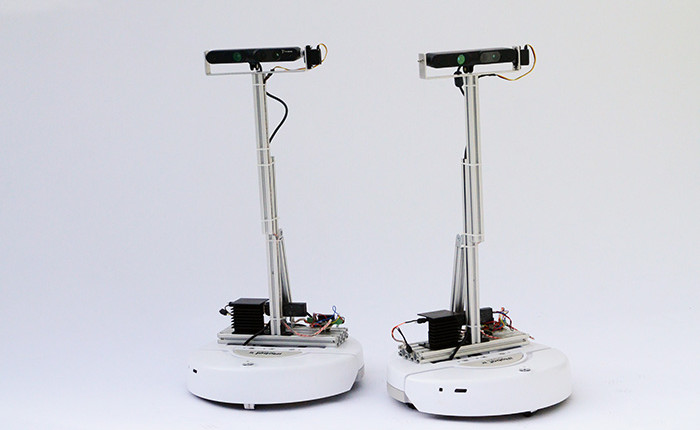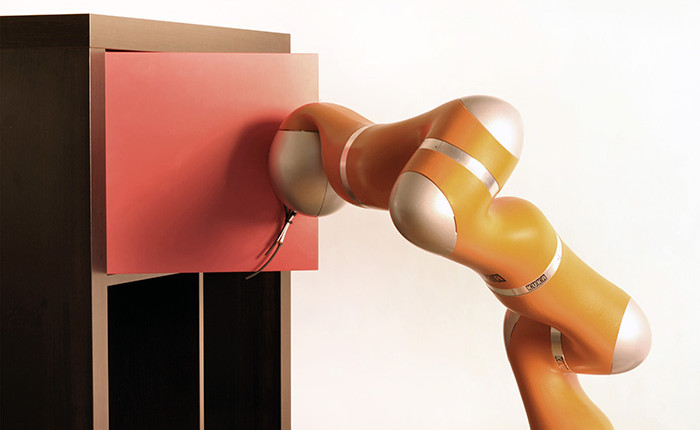ROBOEARTH AND THE ROBOEARTH CLOUD ENGINE
Main Collaborators: Mohanarajah Gajamohan, Nico Huebel and Markus Waibel
RoboEarth is a World Wide Web for robots: An open source database that allows robots to share knowledge, and a cloud computing platform that gives robots access to powerful robotic cloud services.
Today’s robots are operating in isolation from each other. Accumulated knowledge is not shared, and hence many robotic systems solve the same essential problems over and over again. RoboEarth allows robots to store knowledge in a WWW-style database. With knowledge shared on a global scale, RoboEarth has the potential to provide information to any robot’s 3D sensing, acting, and learning capabilities, enabling them to learn from each other. This allows robotic systems to benefit from the experiences of other robots. Through sharing experiences and lessons learned in interactions with the human world, robots will be able to cope with more subtle and sophisticated human-machine interaction.
Moreover, today’s robots only use on-board computation. Computation is a key enabler for intelligent and efficient robot task performance. However, performing all computational tasks on-board can constrain robot mobility and operating duration, and increases costs. The RoboEarth Cloud Engine takes advantage of the rapid increase in mobile data transfer rates to sidestep these and other drawbacks of client-side robot applications. By allowing to run thousands of client-side applications in the cloud, the RoboEarth Cloud Engine gives robots access to the powerful computational resources of modern data centers. In addition, it removes overheads for maintenance, updates, and dependence on custom middleware.
RoboEarth’s World-Wide-Web style database and the RoboEarth Cloud Engine can be implemented on servers with Internet or Intranet functionality. By storing information required for object recognition, navigation, and mapping as well as offering powerful robot web services, RoboEarth will bridge the gap between today’s robots and those of the future.





